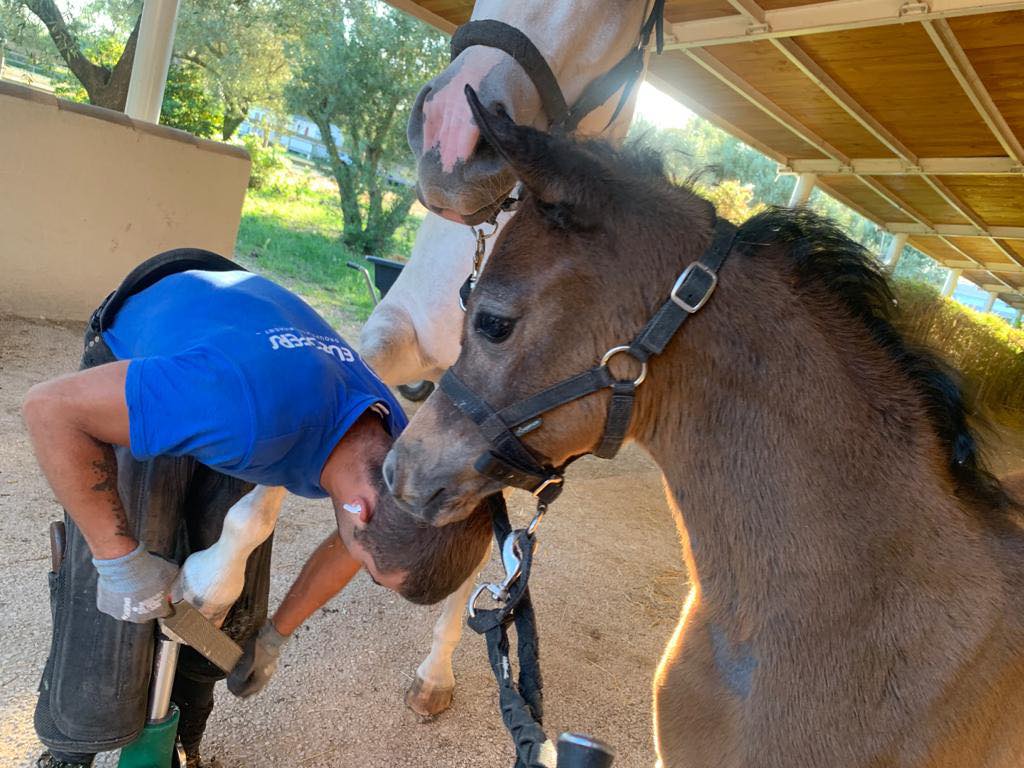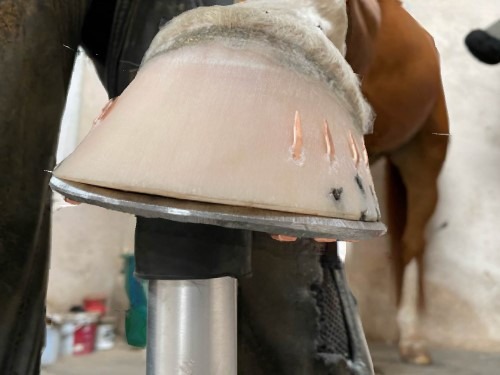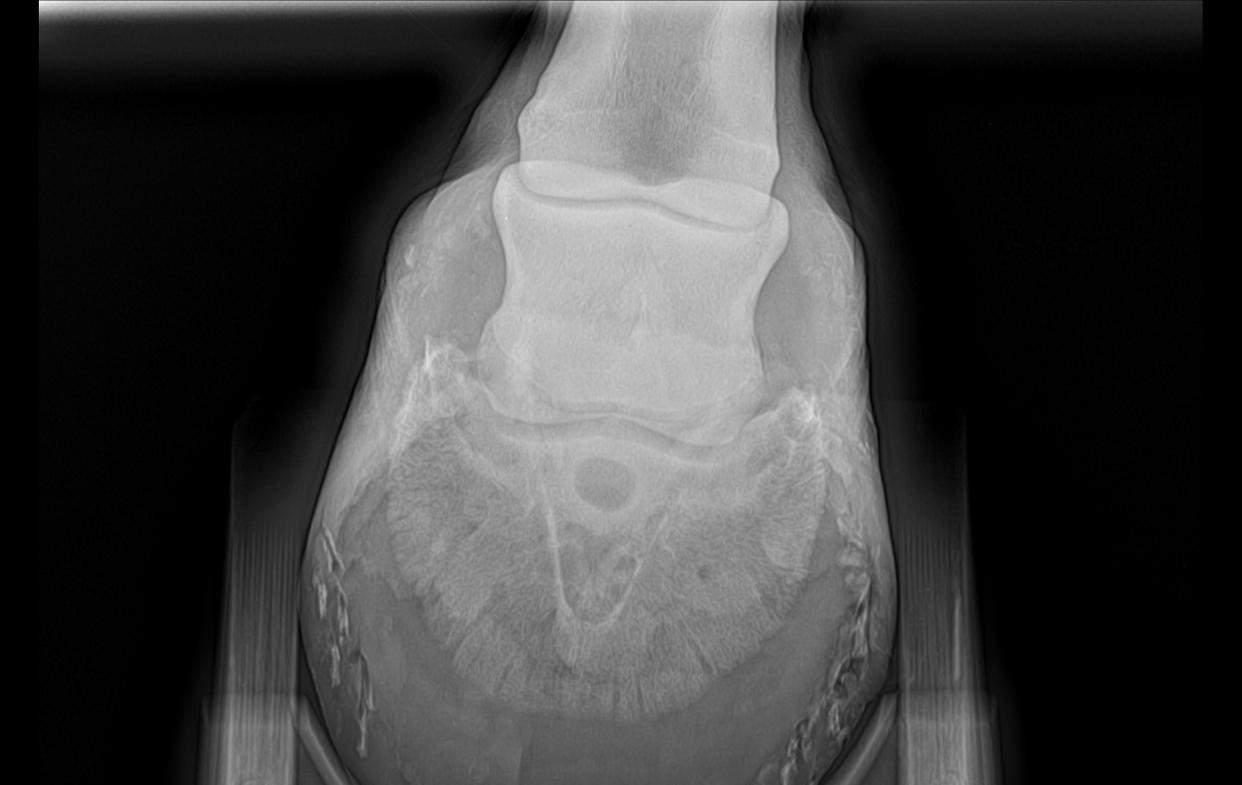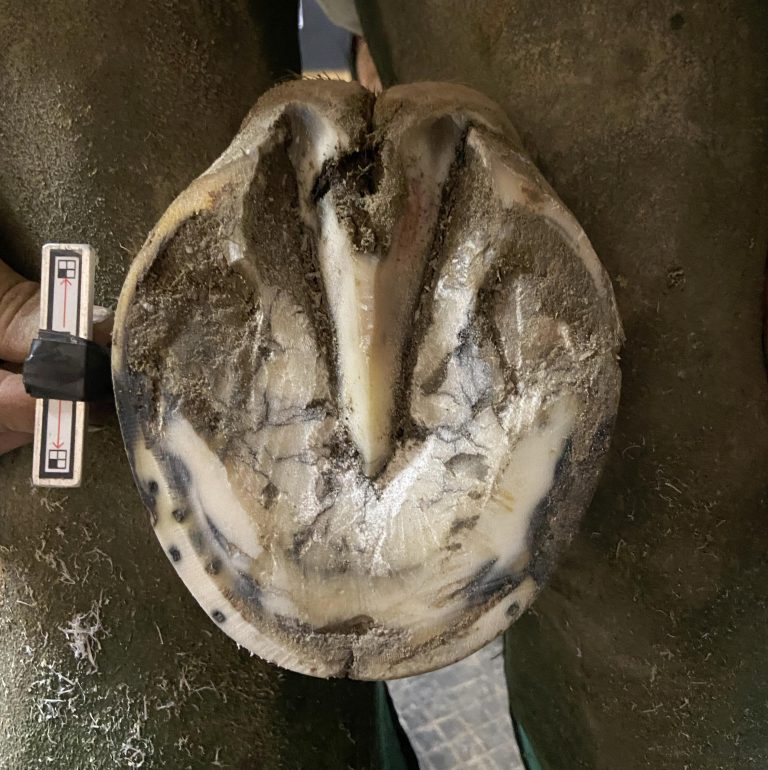Today, we put on the protective shoes of Elian Matéo, a farrier by trade, to learn more about the daily life of these professionals.
A personal point of view that he shares with us with humility, to answer our questions … A farrier, it only serves to put a horseshoe? Well, not really!
Farrier working in the south-east of France, Élian Matéo has agreed to share with us his personal experiences on his daily life. Managing different types of feet can be both simple and complex, there are several factors to consider.

Let's analyze, horse side
1 – Analysis of the whole member
A set of information must be collected to best adapt its work in the short, medium and long terms. The observation is done statically and dynamically, if possible on several types of soil.
Several questions then arise :
- Is the horse regular / irregular or lame? If so, which members are affected?
- Does it have a significant asymmetry?
- Does he have a major defect of limb conformation? Could it complicate the job in any way?
2 – The history of the horse
“After going around the horse a bit, I think it’s very important to talk to the owner. Especially when a major defect of limb conformation or a significant asymmetry is visible”, Explains Élian Matéo.
- Has this horse had a history of prolonged stoppage or immobilization?
- If yes, which ones ? (tendonitis, sprain, osteoarthritis, farrier problem, etc.)
3 – The horse’s age
“More restrictive work in the short term but more effective afterwards can be carried out on a young horse who works little or not, ideally at the earliest if it is a major defect during the growth of a foal”, Continues Élian Matéo. “On an already old horse, with moderate or intensive daily work, I prefer very progressive work, shoeing after shoeing.”
4 – Environment and use of the horse
The living conditions of the horse must be integrated into the reflection:
- Does he live in boxing / field, in areas of humidity / drought?
- How intense is his work: a walk once a month / or intensive daily work?
- In what discipline does he evolves ?
5 – The trimming
“For this point, I want to make it clear that this is my personal opinion. Each farrier will be able to have his opinion according to his own experience”, Continues Elian. “For my part, I think it is above all necessary to take the time to analyze each foot correctly in order to set a long-term goal. These upstream reflections allow us to judge which actions seem most suitable to us. Depending, can I allow myself to be more or less “aggressive”? Are the mechanics of this horse respected? My concern is to make sure not to make it uncomfortable. My role is to analyze, understand, identify overloads and constraints”.
Example of the narrow hoof : “Faced with this kind of hoof shape, my primary goal, depending on the context, is to give support to the frog which is often damaged because unsolicited on this type of foot. For this, I play on the heel opening and on the descent of the heel height. I then take care of the parietal.
For my part, I try as a priority to reduce deformations often visible by stress lines. I remove all the fragile or brittle parts of my hoof capsule, while trying to preserve a round and harmonious foot.”
6 – The case of the foal
“It is important to follow the foals from birth to anticipate the formation of conformation defects, in particular schedule increased monitoring during large growth spurts. Foals that grow too fast may encounter problems due to the tendon system that does not follow, for example. In this type of situation, you have to act quickly. Genetics can play an important role, but several factors can come into play. My mission is to anticipate as much as possible the appearance of faults by adapting my trim.”

“I may also be led to recommend modifications to the foal’s environment to avoid sore feet, by advising the most flexible possible grounds, for example. Ideally, provide a feeder at the right height, and not on the ground. The goal is to limit a repeated static position with support on the same limb which, in the extreme, can also participate in the appearance of a significant asymmetry”.
Let's analyze, owner side
The budget
“It is necessary to talk about it ! Obviously, depending on the situation, different types of horseshoes can be used. Whether steel horseshoes, aluminum, plastic or other, for each type of pathology, there are many models of horseshoes more or less effective. Each farrier has his preferences. It is also possible to use plates, silicones, resins or glue. I think it is important to set a rate base so that customers are not surprised when they receive the invoice. Do not hesitate to discuss with customers to explain the benefits for their horse: more speed on the evolution of the feet, more comfort, or even both depending on the different choice of horseshoes.”
Let's analyze, farrier side
The choice of fitting
It is made according to the needs of the horse and the budget set by the client. “I think everyone has their feelings about the ideal horseshoe in the different situations that we may encounter. Personally, I try to favor comfort and distribute the loads as much as possible over the entire foot. On any type of foot, I ideally prefer a horseshoe without clips, if possible, and placed in the right place with the right size. Exit the too tight feet! I also make sure to prepare a homogeneous trim on the entire foot, in order to have feet that remain strong, from shoeing to shoeing.”


Collaboration between the different professionnals
“It is ideal to be able to work in collaboration with veterinarians who can provide us with different supports (x-ray, ultrasound, etc.) in order to best adapt our horseshoes. Osteopaths can also have a different feeling and provide us with details about a recurring problem (regular blockage of a limb, muscle pain, etc.) The goal is to work as a team, to exchange ideas to anticipate problems over time, and to reveal details invisible to the naked eye.”

Hoof tracking and analysis
Digital foot tracking
“It’s a perfect tool for me. It helps me report on progress (or not) in the short / medium / long term of the evolution of the whole of the hoof capsule. And to be able to change the type of horseshoes if necessary. This allows me to increase my level of analysis and my personal questioning.
The follow-up also enhances my work with the client or the veterinarian, with the possibility of having a constructive exchange around the same values.”
The final word
So, a farrier, that just puts horseshoes, right? Obviously, no. “This is what makes our profession a profession of passion. Every day, every horseshoe, every trim is different. A farrier analyzes, questions himself enormously, adapts. It is important to specify that we are neither diviner nor magician. This is all a personal opinion, taken from my small and young experience. I am learning and improving myself a little more every day.
To sum up : Some problems should be taken from an early age and / or as soon as possible after an injury or immobilization. The search for comfort is essential for me, from the moment the horse begins its sporting activity. Every horse is different, so every horse will react differently. However, the tools available today, whether horseshoes, artifices (plates, silicones, etc.) or digital monitoring, allow us to adapt as best we can to each situation.
My role as a farrier is to contribute, at best, to maintaining correct locomotion over the long term. No feet, no horse!”
Contact details






